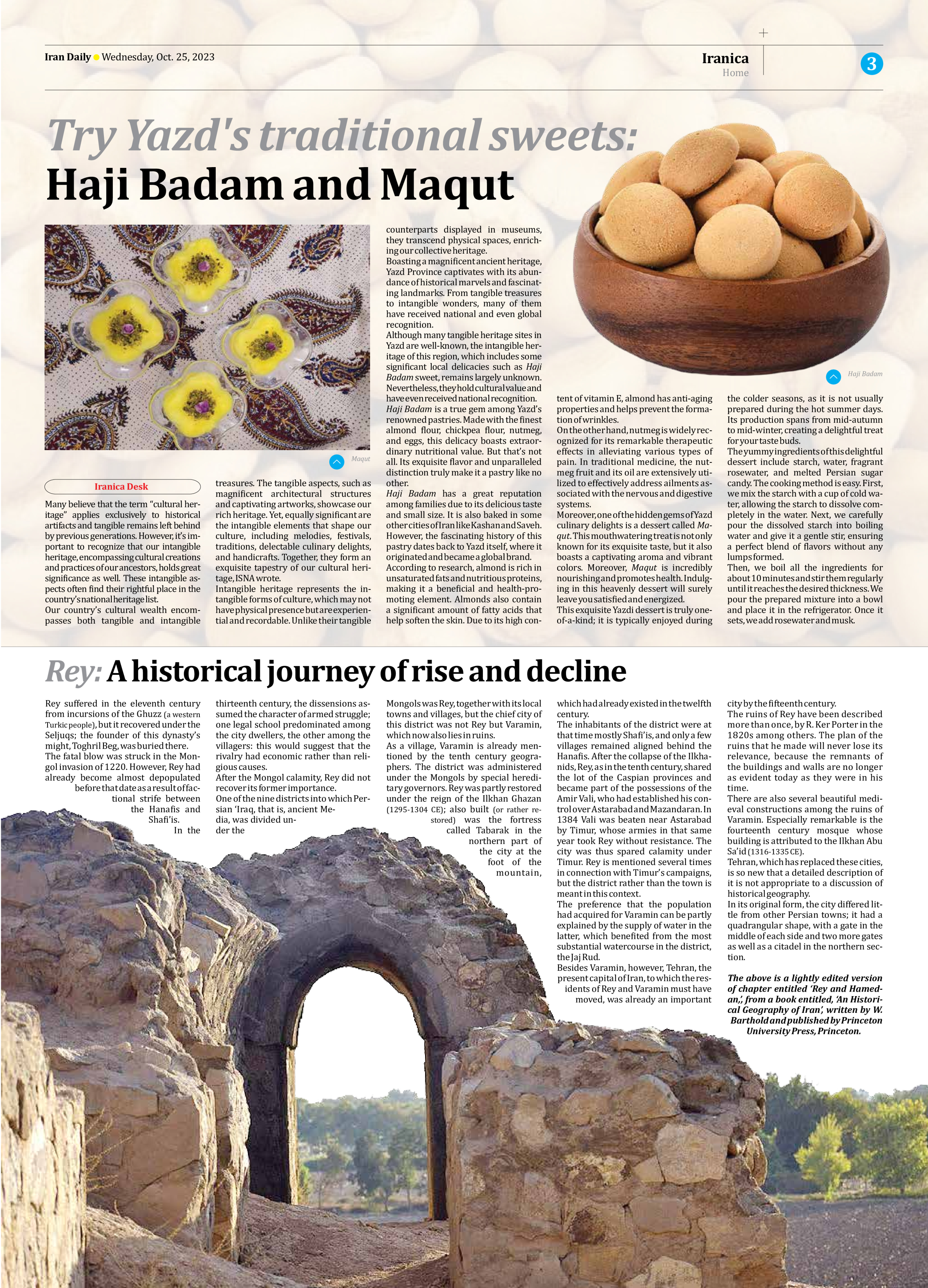
Rey: A historical journey of rise and decline
Rey suffered in the eleventh century from incursions of the Ghuzz (a western Turkic people), but it recovered under the Seljuqs; the founder of this dynasty’s might, Toghril Beg, was buried there.
The fatal blow was struck in the Mongol invasion of 1220. However, Rey had already become almost depopulated before that date as a result of factional strife between the Hanafis and Shafi’is.
In the thirteenth century, the dissensions assumed the character of armed struggle; one legal school predominated among the city dwellers, the other among the villagers: this would suggest that the rivalry had economic rather than religious causes.
After the Mongol calamity, Rey did not recover its former importance.
One of the nine districts into which Persian ‘Iraq, that is, ancient Media, was divided under the Mongols was Rey, together with its local towns and villages, but the chief city of this district was not Rey but Varamin, which now also lies in ruins.
As a village, Varamin is already mentioned by the tenth century geographers. The district was administered under the Mongols by special hereditary governors. Rey was partly restored under the reign of the Ilkhan Ghazan (1295-1304 CE); also built (or rather restored) was the fortress called Tabarak in the northern part of the city at the foot of the mountain, which had already existed in the twelfth century.
The inhabitants of the district were at that time mostly Shafi’is, and only a few villages remained aligned behind the Hanafis. After the collapse of the Ilkhanids, Rey, as in the tenth century, shared the lot of the Caspian provinces and became part of the possessions of the Amir Vali, who had established his control over Astarabad and Mazandaran. In 1384 Vali was beaten near Astarabad by Timur, whose armies in that same year took Rey without resistance. The city was thus spared calamity under Timur. Rey is mentioned several times in connection with Timur’s campaigns, but the district rather than the town is meant in this context.
The preference that the population had acquired for Varamin can be partly explained by the supply of water in the latter, which benefited from the most substantial watercourse in the district, the Jaj Rud.
Besides Varamin, however, Tehran, the present capital of Iran, to which the residents of Rey and Varamin must have moved, was already an important city by the fifteenth century.
The ruins of Rey have been described more than once, by R. Ker Porter in the 1820s among others. The plan of the ruins that he made will never lose its relevance, because the remnants of the buildings and walls are no longer as evident today as they were in his time.
There are also several beautiful medieval constructions among the ruins of Varamin. Especially remarkable is the fourteenth century mosque whose building is attributed to the Ilkhan Abu Sa’id (1316-1335 CE).
Tehran, which has replaced these cities, is so new that a detailed description of it is not appropriate to a discussion of historical geography.
In its original form, the city differed little from other Persian towns; it had a quadrangular shape, with a gate in the middle of each side and two more gates as well as a citadel in the northern section.
The above is a lightly edited version of chapter entitled ‘Rey and Hamedan,’, from a book entitled, ‘An Historical Geography of Iran’, written by W. Barthold and published by Princeton University Press, Princeton.







